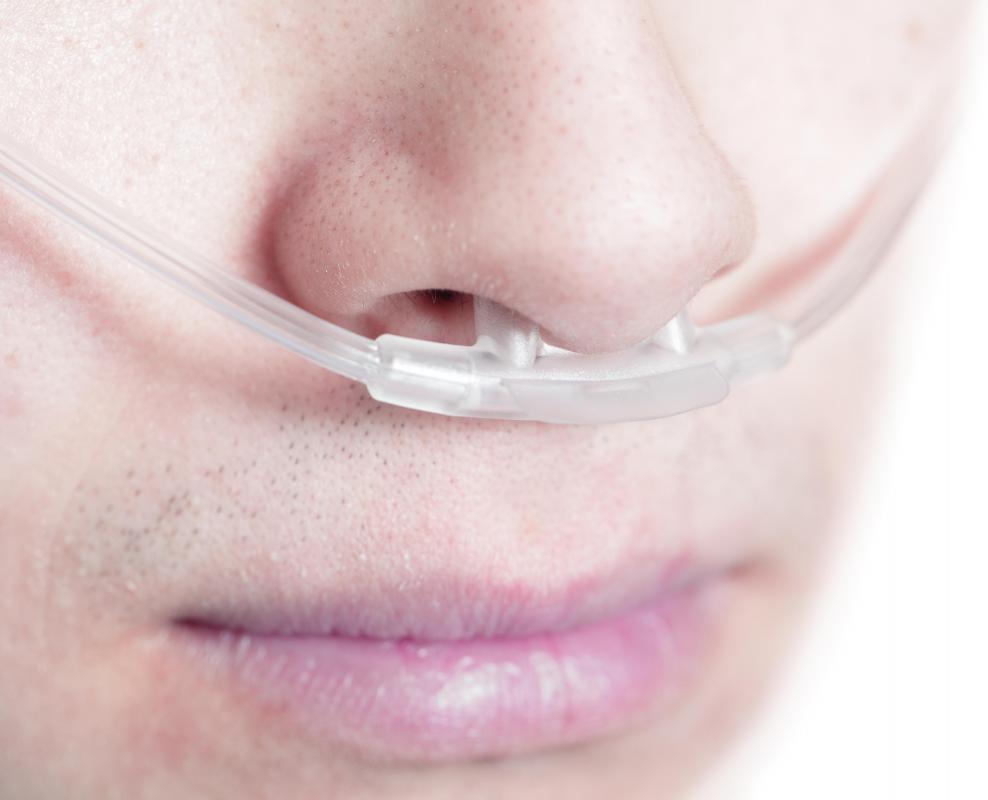At WiseGEEK, we're committed to delivering accurate, trustworthy information. Our expert-authored content is rigorously fact-checked and sourced from credible authorities. Discover how we uphold the highest standards in providing you with reliable knowledge.
What Is Tissue Hypoxia?
Tissue hypoxia is a medical condition where tissues in the body do not receive sufficient oxygen and the cells start to die. Hypoxia can have a number of underlying medical causes and is a source of concern for care providers. If the patient's tissue is not provided with adequate oxygen, widespread tissue necrosis can occur and the tissue may not be able to recover. It is also possible to incur damage in neighboring organs and other structures of the body.
In a case of tissue hypoxia, the normal supply of oxygen does not arrive at the tissue. This may occur because of low blood oxygen level, known as hypoxemia, where the blood reaches the tissue, but there's not enough dissolved oxygen present. It can also happen when the supply of blood is cut off by pressure, an obstruction, or another problem. Patients can also have tissue hypoxia as a result of poor circulation, where blood reaches the tissue but there is not enough, or the blood is anemic and doesn't carry enough red blood cells to meet the patient's need for oxygen.

The symptoms of tissue hypoxia can start with numbness and tingling. The tissue may appear white, then bluish, and usually turns cold to the touch. Sometimes it becomes extremely painful and patients develop muscle cramps in the surrounding area. If the cells are without oxygen long enough, they will start to die. This can cause inflammation and may lead to the development of large ulcerations. If the patient's blood supply is not restored, gangrene can set in, and it is possible to lose an entire extremity.

Treatment of tissue hypoxia starts with prevention. Patients should maintain stable blood pressure and receive regular medical evaluations if they are at risk of low blood oxygen levels because of issues like lung disease. It is important to address any circulatory obstructions, such as clots, tight garments, and so forth as quickly as possible, to allow the tissue to reperfuse with blood before the cells start to die off. If patients notice signs of poor circulation like decreased feeling or skin color changes in the extremities, they should discuss them with a doctor.

Patients who need treatment for hypoxia may receive supplemental oxygen, medications to raise blood pressure, and surgery to treat physical obstructions in the blood vessels. Techniques like massage to improve circulation, as well as electrical stimulation, may be considered as adjunct therapies for some patients. The doctor will follow up on the success of treatment with a physical exam and blood tests to check on dissolved oxygen levels.
AS FEATURED ON:
AS FEATURED ON:




















Discuss this Article
Post your comments